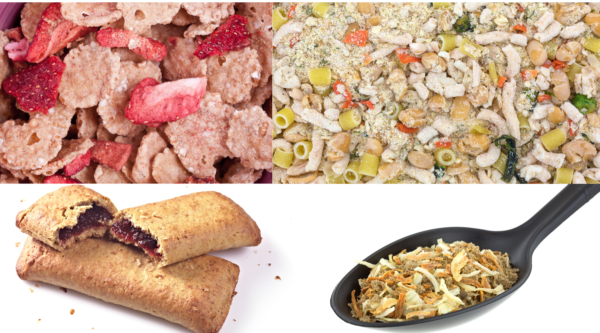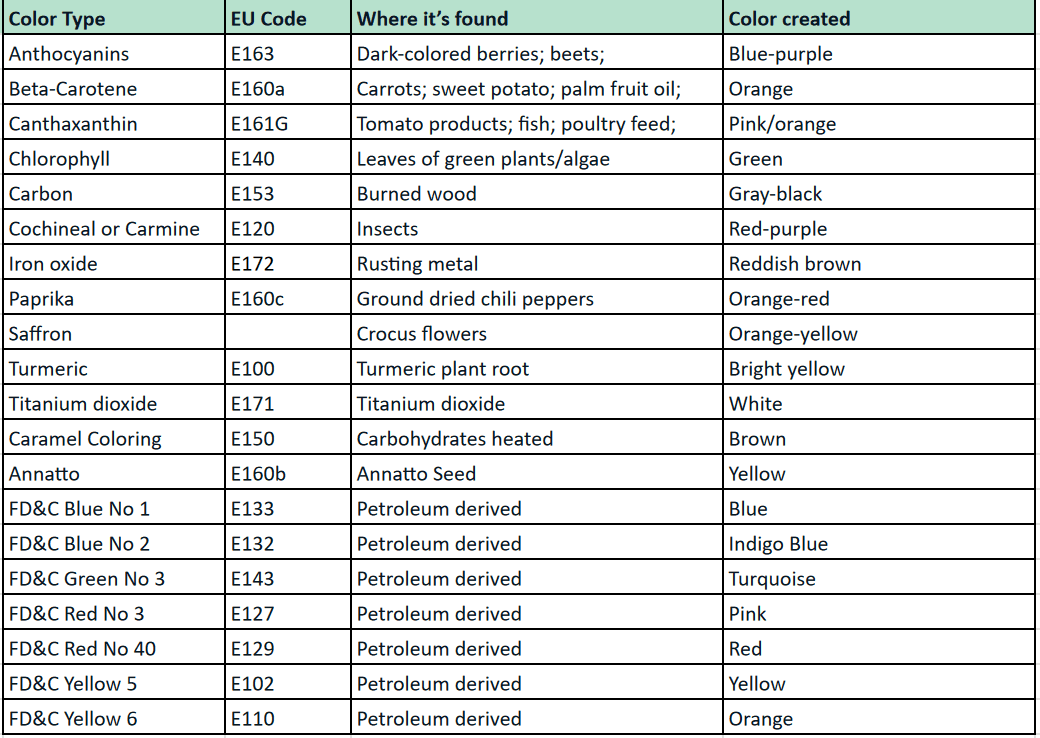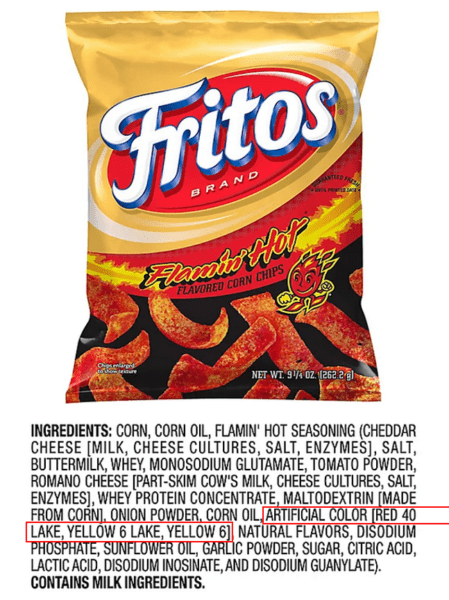Food additives are commonly used to prevent or slow spoilage during storage, preserve vitamin content, or alter food’s appearance, taste, and texture. Food coloring is a type of additive that is functionally unnecessary — its sole purpose is to make food appear more colorful. Unsurprisingly, food dye is common in mass-produced packaged foods that you might be tempted to take backpacking. Common “backpacking” foods containing food dye include packaged food containing dried fruit and vegetables, cheese mix, butter powder, and gelatin. This includes –
- Pasta dishes
- Rice dishes
- Soup mix
- Trail mix
- Granola bars & Pop tarts
- Cheese flavored chips and crackers
- Spice mixes & dressing mixes
- Instant potatoes
- Instant pudding
- Jell-O
- Fake “fruity” cereals
- Candy
Besides the fact that food dye tends to signal a low-quality food, there are growing concerns about the safety and potential health effects of food dyes. Here we’ll explore some reasons you might be concerned about food dye.

Types of Food Colors
Artificial food dyes are made from petroleum-based chemicals. In the United States, FD&C numbers indicate FDA-approved foods made from artificial colors. In contrast, natural food colors are derived from things that exist in nature, mostly from plants but can also include insects. In the European Union, E numbers are used for all food colors, including natural and artificial. Other countries have different regulations and approved lists of food colors. Many food dyes that are allowed in the USA are banned elsewhere.
- Artificial food dyes include Yellow food dyes No. 5 (E102), Yellow No. 6 (E110), Red Dye No. 3 (E127), and Red Dye No. 40 (E129); Sometimes you’ll see the term “lake” used in food coloring; Lake is a water-insoluble form of a pigment dye used in fatty foods and low-moisture foods.
- Natural food colors include Yellow (turmeric), Red (beets, paprika, carmine), Orange (beta carotene), Brown (annatto, caramel), and Green (chlorophyll/spiriluna).
- Artificial food dyes include Yellow food dyes No. 5 (E102), Yellow No. 6 (E110), Red Dye No. 3 (E127), and Red Dye No. 40 (E129); Sometimes you’ll see the term “lake” used in food coloring; Lake is a water-insoluble form of a pigment dye used in fatty foods and low-moisture foods.


Artificial Food Coloring Concerns
- Possible health effects: Some studies have linked food dyes to various health problems such as hyperactivity, allergies, migraine headaches, and cancer. Three commonly used dyes (Red 40, Yellow 5, and Yellow 6), have been shown to cause hyperactivity and behavioral problems in children. They may also contain contaminants such as benzidine that are linked to cancer.¹
- Food allergies: Food dyes can cause food allergies and sensitivities in some people. Symptoms include hives, itching, and breathing difficulties when consuming foods containing dyes. Four dyes (Blue 1, Red 40, Yellow 5, and Yellow 6) cause hypersensitivity reactions.The FDA says reactions to food coloring are rare but acknowledges that Yellow No. 5, used widely in drinks, processed vegetables, cereals, baked goods, and drugs, can cause itching and hives.²
- Lack of regulation: Food dyes are not subject to the same level of regulation as other food additives, and their safety is often based on self-reported studies by the manufacturers. This lack of regulation and oversight raises concerns about the safety of food dyes and the accuracy of the information provided about them.
Given the concerns and controversy, you may want to avoid foods or reduce exposure to packaged foods containing artificial colors. If food must be colored at all, it can be replaced with safer substances.
Look for Natural Food Colors Made from Plants
- Natural food dyes made from plants are already widely used by industry in the EU. For instance, Kraft and Kellogg sell products in countries where synthetic food dyes are banned by employing natural colorants like paprika extract, annatto, turmeric, and beetroot.
- Natural does not always mean safe or plant-based. For example, carmine, the red coloring made from the cochineal insect, can cause severe allergic reactions.
Food Dye Updates
- In the 1980s, the FDA found that Red 3 is a carcinogen, but industry pressure prevented the agency from banning it.
- In the 1990s, FDA studies found high levels of a carcinogen (benzidine) in Yellows 5 and 6.
- Recently in the EU, Yellow Dye 5 (E102) and 6 and Red Dye 40 must carry a warning that the colors “may have an adverse effect on activity and attention in children.” No such warning is required in the United States.
- In 2022, several organizations urged the Food and Drug Administration to formally remove Red No. 3 from the list of approved color additives in foods.
- In 2023, California and New York are trying to pass legislation to ban the sale of foods in the state containing Red Dye No. 3
The fact that artificial dyes do not improve the safety or nutritional quality of foods and their potential toxicity indicates that these dyes shouldn’t be consumed. Many foods that backpackers tend to eat can contain artificial colors and other low-quality substances that add up in the body. Eating excessive amounts of junk food on the trail can weaken your immune system and physical stamina, leaving you feeling miserable in the backcountry. Outdoor Herbivore’s backpacking foods contain NO artificial food dyes, synthetic flavors, sulfates, or other chemical preservatives.

References
Safety of color additives
Toxicology of food dyes
Cancer and toxicity concerns of food dyes
California Assembly Bill 418